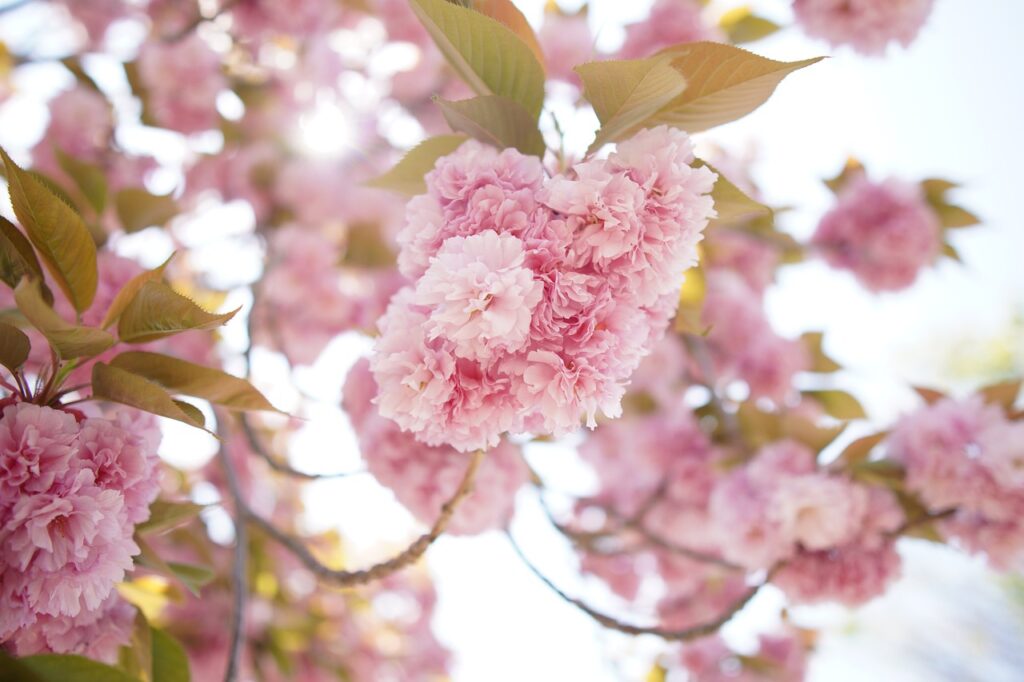
Trees with pink flowers may transform an average garden into a dreamlike paradise, adding a pleasant mood to any outdoor space. There are numerous pink flowering trees to select from, whether you want to add seasonal color, encourage pollinators, or create a bold landscape statement. Here, we will look at the top ten beautiful trees with pink flowers to consider for your garden.
1. Eastern Red-bud
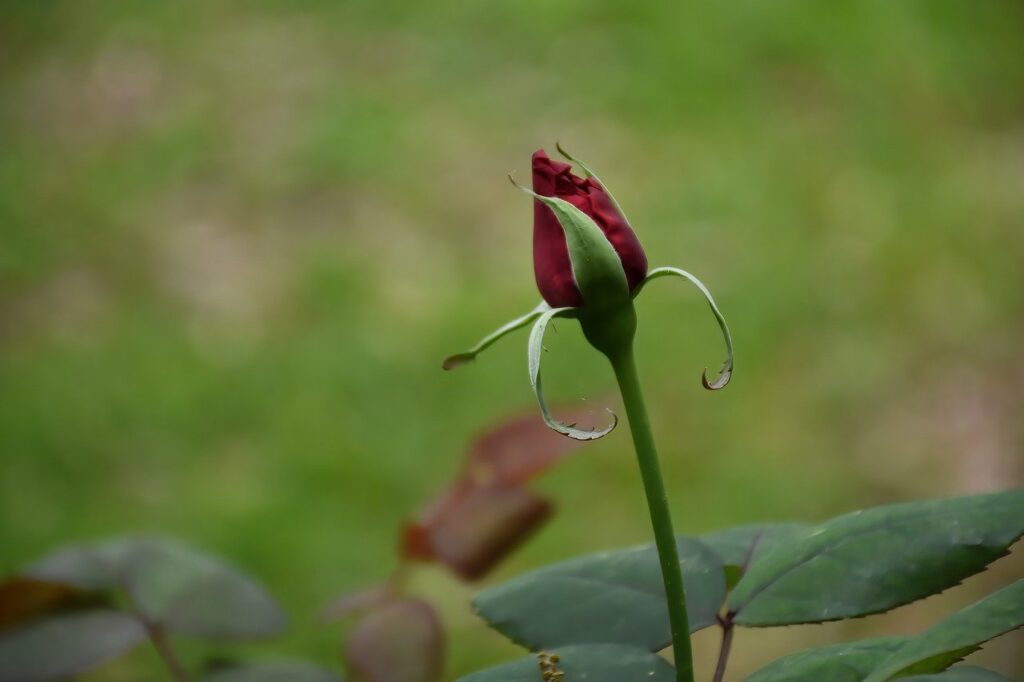
Gardeners adore the Eastern Red-bud, which produces brilliant, pink blossoms in early spring. These blossoms cover the branches before the leaver appear, leaving a beautiful silhouette against the sky
Appearance and Features:
This small to medium sized trees has clusters of rosy pink bloom, heart-shaped leaves, and an elegant branching pattern.
Growing Conditions:
Eastern Red-buds thrive in full sun to light shade and require well-drained soil to develop.
Care Instructions:
Prune after flowering to retain shape, and water thoroughly during dry spells.
Flowering Cherry:
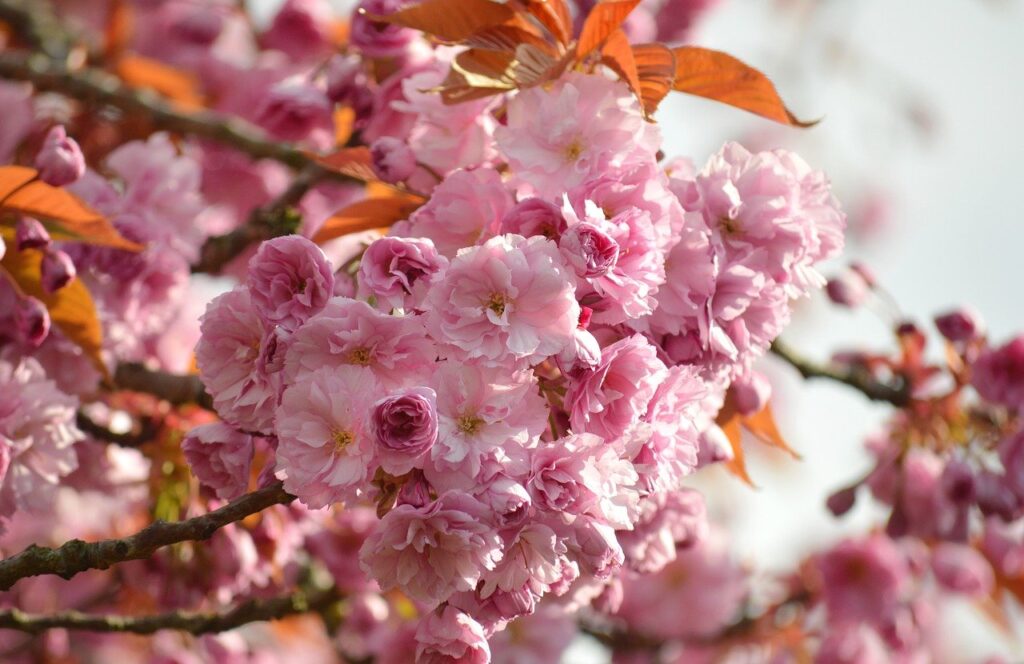
Flowering Cherry trees are springtime icons, with delicate, soft-pink blossoms that provide a stunning display. These trees, well Known for their appearance at cherry blossom festivals all around the world, add delight and beauty to any setting.
Varieties:
Popular kinds include Yoshino and Kwanzan cherries, which are famed for their pink flowers and prolific spring blooms.
Ideal Growing Condition:
Flowering Cherries prefer direct sunlight and well-drained, fertile soil.
Maintenance:
Prune during the dormant season to control growth and ensure the trees health.
3. Magnolia:

Magnolias are classic garden favorites, particularly the Saucer Magnolia, which produces huge, cup-shaped flowers in pink and white. These trees make a dramatic statement in the spring.
Appearance:
The Saucer Magnolia produces huge blooms that open before the leaves, creating a visually appealing show.
Growing Tips:
These Trees prefer slightly acidic, well-drained soil with full sun to partial shade.
Care:
Regular watering, mulching, and wind protection are needed, especially in hot or dry areas.
4. Dogwood
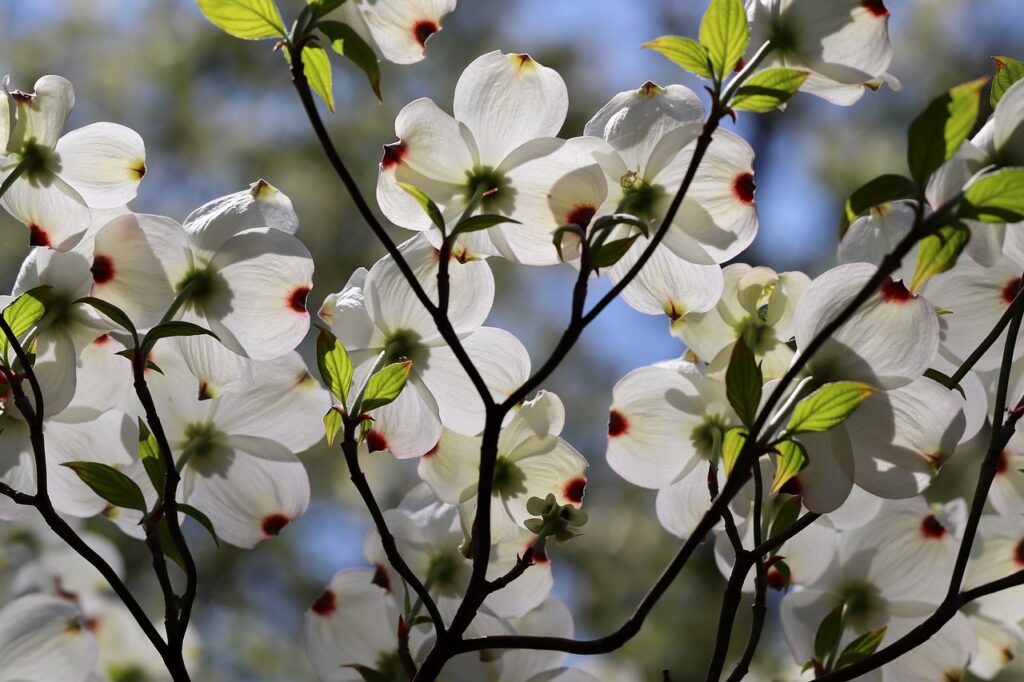
Pink Dogwood are known for their graceful look and symbolic beauty. The delicate pink bracts encircle the tiny core flowers, producing a star-like impression on the branches.
Appearance:
The Pink Dogwood’s beautiful pink blossoms and elegant branching structure offer sophisticated beauty to any garden.
Environmental Requirements:
Prefers partial shade to full sun and grows best in moist, well-drained soil.
Care Tips:
In warmer climates, minimal pruning is required, but pest and diseases monitoring is vital.
5. Crape Myrtle

Pink flowers on Crape Myrtle trees bloom from summer into early fall, adding to their multi-season beauty. They are renowned for their eye-catching bark and vivid blossoms, which provide visual appeal throughout the
Features and Flowers:
The bark ex-foliates to expose smooth, mottled surfaces, and dense clusters of pink flowers are seen.
Growing Condition:
Full sun and well-drained soil are ideal for crape myrtles.
Pruning Advice:
To promote rapid growth and achieve the ideal tree shape, prune in late winter.
6. Peach Tree

If you’re seeking for both beauty and abundance, the peach Tree provides fragrant pink blooms in the spring and tasty fruit in the summer. Peach trees are a wonderful addition to any garden.
Appearance:
These trees bloom in early spring with beautiful pink blossoms, followed by tasty, succulent peaches.
Growing Requirements:
Peach trees prefer full sun and well drained, slightly acidic soil.
Pruning Tips:
Regular pruning is required to enhance airflow and sunshine penetration, resulting in robust flowers and fruit production.
7. Japanese Flowering Apricot
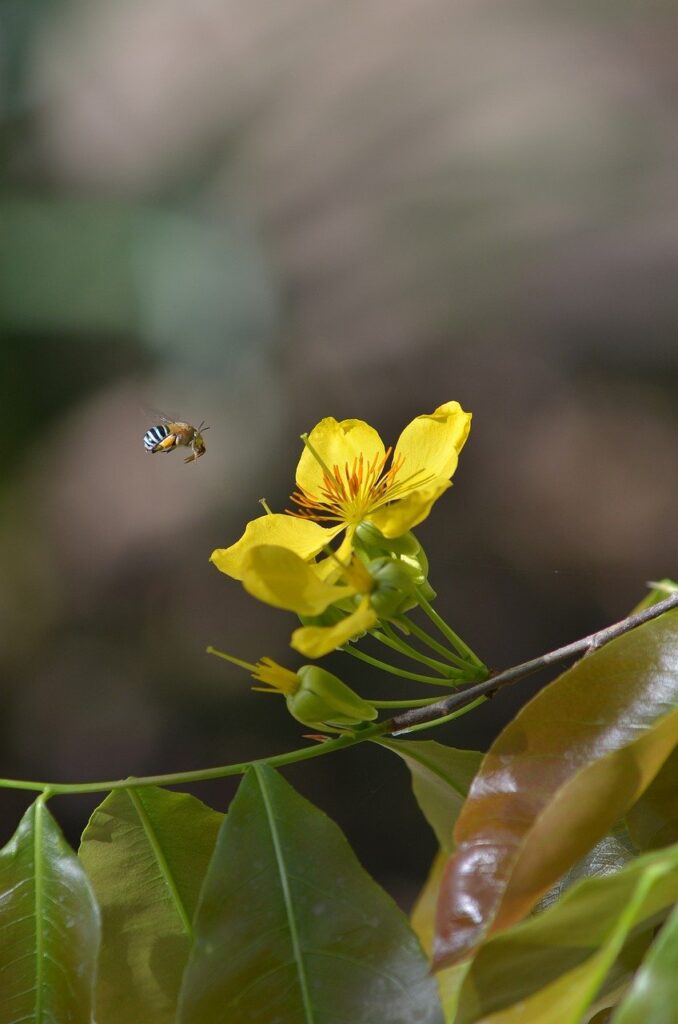
The Japanese Flowering Apricot is an unusual choice that adds early blooms and a wonderful aroma to the garden. Its pink blossoms appear as early as late winter, making it one of the first trees to bloom each year.
Distinctive Features:
This Tree is known for its pink blossoms and powerful, sweet fragrance.
Ideal Climate:
It thrives in mild winter climes and warm, humid summers.
Care Tips:
Japanese Flowering Apricots require full sun to moderate shade, as well as protection from hard winter winds.
8.Silk Tree
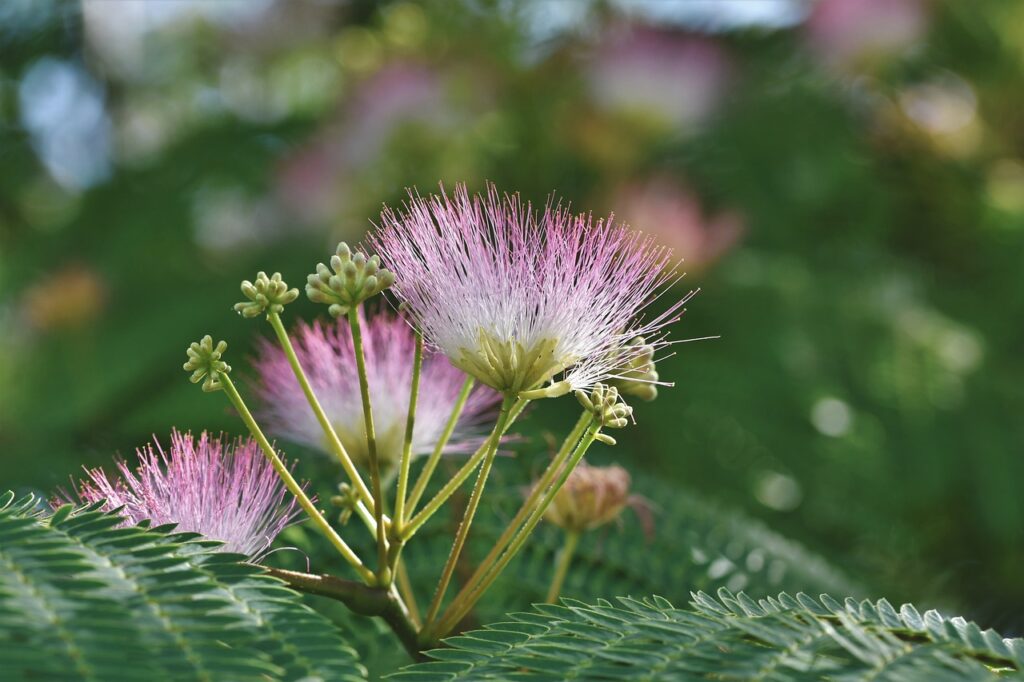
The Silk Tree, commonly Known as the Mimosa, is a distinctive choice with feathery pink blossoms that resemble pom-poms. Its exotic appearance and airy foliage give a tropical atmosphere in the garden.
Appearance:
Silk Trees are easily identified by their fluffy pink blossoms and delicate, fern-like leaves.
Growing Condition:
Prefers warm weather, full sun, and well-drained soil.
Maintenance:
Generally low-maintenance, however staking may be required in windy places.
9. Oleander

Oleander trees are recognized for their durability and long blooming season, producing clusters of pink blooms from summer to autumn. They are perfect for gardeners in warm, dry areas.
Flowers and Hues:
Oleanders come in a variety of colors, including pink, white and red.
Care Requirements:
Oleander thrive in full sunlight and require little water once established.
Caution:
Oleander is harmful if consumed, therefore do not grow it where pets or children may come into touch.
10. Chitalpa
The chitalpa is a distinct of the Catalpa and desert Willow, noteable for its clusters of pink trumpet-shaped blooms that bloom from late spring to summer.
Distinctive Features:
This small to medium-sized tree has pink flowers that attract pollinators.
Ideal Growing Condition:
Chitalpas thrive in full sun and well-drained soil.
Maintenance:
Water regularly in hot, dry conditions and prune to keep its form.
How to Select the Ideal trees with pink flowers for your Garden
when choosing the ideal trees with pink flowers for your garden, consider climate, soil type, and available space. Compact trees like the Eastern Red-bud or Dogwood may benefit smaller gardens, whilst majestic trees like the Crape Myrtle or Silk Tree can be used in bigger landscape.
1. Climate Suitability:
The Oleander and Silk Tree flourish in warm, dry regions, whilst the Dogwood prefers milder circumstances.
2. Soil Type:
Check your soil’s pH and drainage. Magnolias, for example, demand some what acidic soil, whilst crape myrtles prefer well-drained soil.
3. Size and Maintenance:
Choose a tree that fits the available space and upkeep requirements. Low maintenance trees like the Eastern Red-bud are great for busy gardeners, although fruit-bearing trees like the Peach Tree may necessitate more care.
Benefits of Adding Trees With Pink Flowers To Your Garden
Planting Pink lowering trees does more than only enhance the attractiveness of your garden.
Here are some more benefits:
Aesthetic Appeal:
Pink flowering trees provide an excellent focus point in any landscape, offering charm and elegance that few other plants can equal.
Pollinator Attraction:
Many of these trees attract pollinators like bees and butterflies, which provide vital food and shelter.
Seasonal Interest:
Pink flowering trees have year round beauty, from the early blossoms of the Japanese Flowering Apricot to the long-lasting color of the Oleander.
Conclusion
Adding trees with pink flowers to your garden may have a transforming effect, bringing beauty, scent, and even wildlife to your outdoor space. From the early blooming Red-bud to the vivid Oleander, there’s pink flowering tree to suit every climate, garden size, and personal preference. Consider your specific gardening circumstances and choose a tree that will grow and delight for years to come.
